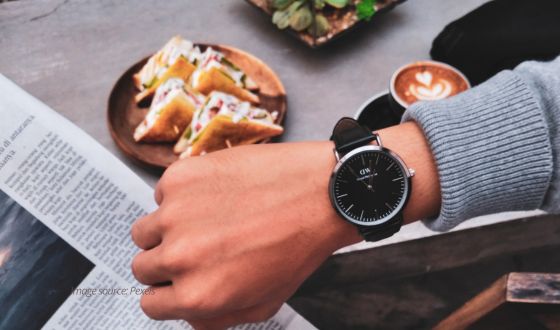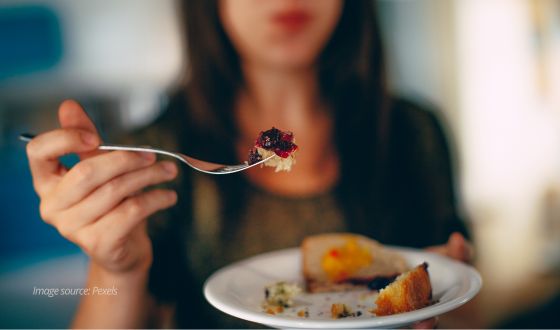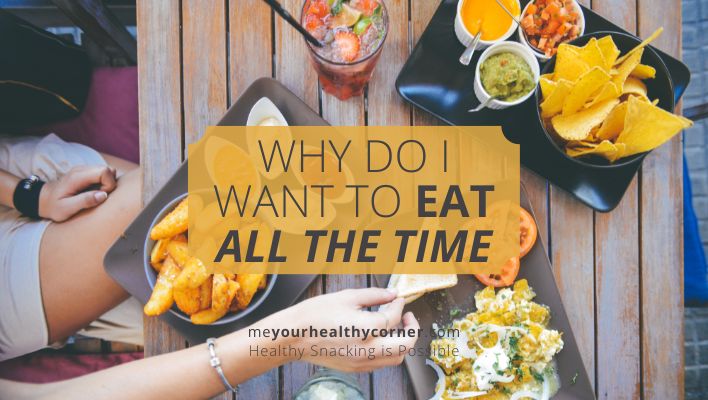Snacking, it’s something we all do from time to time, but what if it becomes a frequent habit, leaving you perpetually hungry? I know someone who always wants to eat even though not actually hungry. This propelled me to write this blog post. If you are one who always feels hungry even after eating and keep snacking, I have the answer for you. We’ve all been there, reaching for snacks even after a meal. Worry not, let’s deal with this together. Read on to find out how to control those craving, and a selection of wholesome and nutritious snacks that won’t derail your healthy eating goals.
Why Do I Want to Eat All the Time? Constantly Snacking.
Understanding why we snack between meals is the first step in curbing this habit. Several factors can contribute to the persistent urge to snack.
Here are 5 reasons
1. Stress

Research has extensively linked stress to increased appetite and the desire for snacking. Stress triggers the release of cortisol, the primary stress hormone, which can stimulate the appetite.
A study published in the National Library of Medicine highlighted the effects of stress-induced eating. The research revealed a direct correlation between heightened stress levels and increased calorie consumption, often leading to the choice of high-calorie, comforting foods. When stressed, individuals often seek solace in sugary or fatty snacks, seeking immediate relief from emotional distress.
Sad to say, there are 2 persons in my family with this condition.
2. Emotional Triggers
Emotional eating is a prevalent reason for indulging in snacks, driven by emotions such as sadness, boredom, or even happiness. Yes, that’s right, happiness included.
When feeling low or bored, individuals frequently turn to food for comfort. A study found that emotional eating was often associated with the desire for sweet or high-fat foods. Very similar to stress eating.
Furthermore, moments of happiness or celebration often lead to overeating as well, indicating that emotional triggers, whether negative or positive, play a significant role in prompting snack consumption.
3. Irregular Meal Patterns

Inconsistent meal timings or skipping meals can cause fluctuations in blood sugar levels, leading to feelings of hunger and the desire to snack.
When meals are irregular or skipped, the body’s blood sugar levels can drop, causing hunger pangs and subsequent cravings for quick energy sources. This is where you will simply grab anything to have a quick bite. For instance, cookies, chocolate bars, instant/cup noodles etc.
In short, skipping meals can significantly impact hunger and increase the likelihood of subsequent snacking.
4. Dehydration
Thirst is occasionally mistaken for hunger, leading individuals to snack when they’re actually in need of hydration. Staying adequately hydrated is crucial to avoid unnecessary snacking.
A study demonstrated that inadequate hydration can lead to increased feelings of hunger, compelling individuals to snack even when they’re not truly hungry.
I have experienced this situation many times. Talk more about this below.
5. Unbalanced Meals
Meals lacking essential nutrients like protein, healthy fats, and fibre can leave individuals feeling unsatisfied and more prone to seeking additional snacks.
A study published in the National Library of Medicine underlines that a diet deficient in these nutrients can increase hunger pangs. 768 participated in this study. Nearly 80% of respondents reported that their experience of hunger had changed since starting the high nutrient-density diet, with 51% reporting a dramatic or complete change in their experience of hunger. Hunger was not an unpleasant experience while on the high nutrient density diet, was well tolerated and occurred with less frequency even when meals were skipped.
On the whole, inadequate consumption of essential nutrients often fails to satiate hunger, resulting in subsequent snacking behaviours.
I hope the above provides you an insight into the various factors that drive individuals to snack between meals. Understanding these influences can help in curbing excessive snacking habits and making more informed dietary choices.
Next, surely you like to know…
How to Stop Snacking Between Meals
Here is how you do it.
1. Mindful Eating

Mindful eating is a practice that emphasizes awareness and consciousness during meals. It involves paying close attention to your entire eating experience – from the food’s texture and taste to your body’s hunger cues.
It is good to know that practising mindful eating can lead to decreased calorie intake. Isn’t this good for you who are watching your weight?
Furthermore, being mindful when eating can eliminate distractions. You become more attuned to your body’s signals, distinguishing true hunger from emotional cravings. Also, engaging all senses while eating can enhance satisfaction, leading to a more fulfilling eating experience.
2. Balanced Meals
Ensuring meals are nutritionally balanced is crucial in preventing the need for excessive snacking. Meals rich in protein, healthy fats, and fibre keep you feeling full and satisfied for longer durations.
For instance, enjoying a meal composed of grilled chicken breast, mixed greens, and nuts provides a combination of macronutrients and micronutrients that satiate hunger and reduce cravings. Appetising, yes? What say you?
3. Stay Hydrated
As mentioned above, sometimes, thirst masquerades as hunger.
Many times, I simply drink a glass of water when feeling hungry. Normally, I will do this when it’s near lunch or dinner time.
Sudden hunger pangs can happen any time of the day and if it’s near to a regular meal time, you wouldn’t want to snack and disrupt your main meals.

So, aim to drink enough water throughout the day.
You can also infuse your water with fresh herbs or citrus slices for a refreshing twist. This not only adds flavour but also makes it more appealing, encouraging increased intake.
This strategy helps maintain hydration levels, preventing potential feelings of hunger that might lead to snack cravings.
4. Plan Your Snacks
If you still find yourself needing a snack, plan for it so that you will not reach for unhealthy ones. Planning and preparing snacks leads to a higher intake of nutrient-dense foods.
If you’re not preparing your own and rely on store-bought healthy snacks, I like to remind you to always read the ingredients label.
Take an example, granola bars. Often advertised and marketed as healthy granola bars but how healthy they are? Most contain filler and unpronounceable ingredients. Having said that, with some effort, I’m sure you will find a good few which are actually healthy. The shorter the ingredients list, the better.
Read more about Healthy Granola Bars here.
Let’s Satisfy Your Cravings. Healthy Snacks to Eat Between Meals.
Here is a list of healthy snack options that you can incorporate into your daily routine without guilt. Furthermore, it’s quick and easy to prepare.
1. Greek Yoghurt with Berries
A creamy and protein-packed option with the sweetness of berries. Sprinkle some chia seeds for added fibre.
I have come to know Greek yoghurt is a good source of protein and I will write a blog post on this soon. Follow Me YourHealthy Corner on Facebook, Instagram and Pinterest for new blog posts and, more insightful content and tips on healthy eating.
Update: Here is a post on Greek yoghurt. Its health benefits and other information you should know.
2. Oatmeal with Nuts
A bowl of oats topped with almonds, walnuts, hazelnuts or other types of healthy nuts and a drizzle of honey offers fibre and healthy fats for sustained energy.
Did you know you don’t have to cook oats on the stovetop? That’s right. Normally, I simply add hot water to a bowl of oats, cover for about 15 minutes and enjoy it with a drizzle of honey.
Oatmeal is usually eaten as breakfast but you can make a small portion for snacking. This is healthier than processed snacks.
3. Carrot Sticks with Hummus
Crunchy, low-calorie carrots paired with protein-rich hummus. A satisfying, guilt-free snack.
Other vegetables that go well with hummus include celery, cucumber and cherry tomatoes. I understand if you don’t like raw vegetables as a snack or like to have chips instead. There are some healthy chips or vegetable crisps available online. I found a few for you (in the section below) if you’re interested.

4. Granola
The ingredients that make granola are oats, nuts, seeds and dried fruits. They contain beneficial nutrients such as fibre, healthy fats, vitamins and minerals.
Crunchy, sweet and satisfying, granola is a healthy snack but only eaten in small amounts. It is best to portion the granola before you start snacking straight out of the bag. Trust me, you will eat more than you realise. You don’t want that, do you?
5. Overnight Oats
Prepare a jar of overnight oats the night before, and you’ll have a ready-to-eat snack any time of the day. Top with sliced bananas or other fresh fruits you have available and enjoy it.
This is how I make mine and it only takes 2 minutes to prepare.
- Add boiled room-temperature water to rolled oats in a jar. Sometimes, I like to use honey water or fruit juices such as apple, orange, and mango juice.
- Give it a good stir, making sure the liquid covers at least one cm above the oats. You may add or reduce to adjust the consistency to your liking.
- Cover and put inside the fridge.
The overnight oats typically last for up to 5 days in the fridge.
6. Trail Mix
Trail mix is mainly made up of nuts and seeds but some contain dried fruits and chocolates too. Packed with a variety of nutrients and antioxidants, trail mix provides a convenient and energizing snack.
Similar to granola, be very mindful when snacking on trail mix making sure not to go overboard.
Read more about trail mix here – find out how to build your own trail mix and whether is it cheaper to make your own or just buy it.
Look what I found – Healthy Packaged Snacks
For US Readers, the following are found on Amazon US (Affiliate links*)

QUEST Protein Chips
Delicious snacks with 19 grams of protein and 4 grams of net carbs per bag. 12 packs, 1.1 ounce per pack. Come in three flavors, Cheddar & Sour Cream, BBQ, and Sour Cream & Onion.

OFF THE EATEN PATH Hummus Chips, Rosemary & Olive Oil
Packed with chickpeas and seasoned with a bright mix of oregano, rosemary and thyme. Pack of 16, 1.25 ounce. 4 grams of protein per serving.
*I receive a small commission at no extra cost to you. This allows me to enjoy a cup of coffee while writing and sharing more articles like this one.
For my fellow Malaysians, there is a good selection on Shoppe. Click on my affiliate link* and it will take you directly to the page. If you like to buy what I make for my family, my Granola Clusters and Muesli Mixes are on Facebook and Instagram.
In a Nutshell
Snacking is a natural part of our daily routine, but when it becomes excessive, it can interfere your progress toward a healthier lifestyle.
I hope this article helps you understand why you want to eat all the time. At times, even after eating. Try the strategies and healthy snack ideas I’ve shared. All being well, you may overcome the urge to snack mindlessly and embrace a more balanced and nutritious approach to eating.
Let’s make those in-between-meal nibbles a delicious and healthy part of your journey to wellness.
Tell us in the comments section below if you’ll be trying out the ways to stop snacking between meals and which is your favourite go-to should you still find yourself wanting to snack.
Please share this article with anyone you think may find this information useful. Click the share button!
More to learn if you’re keen:
- Interesting facts on fats
- What is pumpkin seeds good for
- How healthy is muesli? What’s the best way to eat muesli
Thanks for reading.
Me YourHealthy Corner – Stay in good health, healthy eating habits
Disclosure: This blog post may contain affiliate links as part of the Amazon.com Services LLC Associate Programs and other affiliate services. This means that meyourhealthycorner.com receives a small commission by linking to amazon.com and other sites at no extra cost to the readers.
Medical Disclaimer: I am not a doctor or medical professional, and this post should not be taken as medical advice. Please do your own research. The material on this blog is provided for informational purposes only. It is general information that may not apply to you as an individual and is not a substitute for your own doctor’s medical care or advice.




This is a very good article. You have a lot of good points! Why do we want to eat all the time then you give us some pointers as to how to handle those cravings. Water is good to fill us up and very good for our health too. For some of us who cannot drink water, just add a lemon to it, it makes such a difference. Are those suggestions good for diabetic people?
Thank you for your positive feedback! Understanding the urge to snack excessively is crucial. You’re right; water is a fantastic way to fill up and support overall health. Adding a squeeze of lemon to water can be a refreshing alternative for those who find it challenging to drink water alone.
For diabetics, choosing lemon-infused water can aid in managing cravings and staying hydrated. However, I want to say it is best for individuals with diabetes to monitor their overall diet and consult a healthcare professional for personalized dietary advice.
Curbing cravings and avoiding between-meal snacking can be quite a challenge. I’ve found that having healthy snacks like fruits or nuts readily available can help, and it’s essential to stay hydrated as thirst can sometimes be mistaken for hunger.
Personally, practicing mindful eating and keeping a regular meal schedule has been effective in reducing those tempting snack moments.
Thanks for sharing, Jake.
Your article on understanding constant cravings resonated with me. It’s refreshing to see a holistic approach, delving into emotional and physical factors. Personally, I’ve found meditation to be a game-changer.
Your emphasis on listening to our bodies is crucial. Navigating the balance between indulging in cravings occasionally and maintaining a healthy lifestyle can be challenging. Thanks for listing several easy tips and healthy snack options for me to try.
I’m glad this article contains helpful information you could use. And good to know meditation works well for you. Stay healthy!
This is me when I’m busy at work, lol! After I do something and before I go on with the next, I feel I have to eat my snacks.
Definitely, granola bars are really sweet. Thus, I limit them to like 1-2 times a week only.
Because I’m a borderline diabetic, I really have to have snacks in between my meals but I try to eat as healthy as possible, but as a mom, I have to be practical, and sometimes eat some left-overs that are not so healthy.
Thanks for this helpful article.
Marita
Hi Marita. As a mom myself, I can relate to eating left-overs. I’m a frugal mom 🙂
Granola bars are not for me nor my children as they find it sweet too. That’s the reason why I make my own granola. I can control the sugar amount, eliminate the artificial flavourings, preservatives and unnecessary fillers.
Read more about granola here to find out why commercial ones are overly sweet.
Thanks for commenting and stay healthy!